Cosmic Curiosities
“Antarctica is a paradise compared to Mars.”
- Sandra Faber, American Astrophysicist
Four to Mars This July
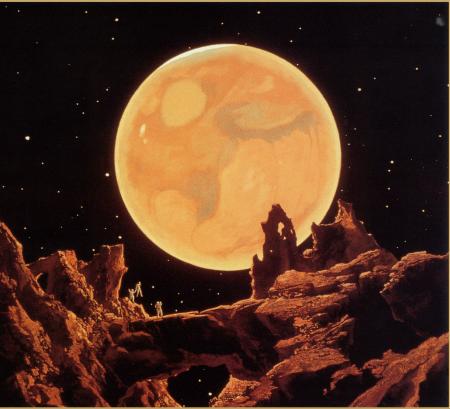
At first, we saw Mars as a god. In the 17th century, a few adventures were penned about going there. By the late 19th century, astronomers thought they saw canals—signs of life—on the red planet. Fantastical stories sprang up—War of the Worlds being one of the most famous.
Finally, after many failed missions, in 1965 America’s Mariner 4 did it! It was the first spacecraft to fly by Mars and send back the detailed images. Granted, they were pretty bad compared to today, but Mars has been beckoning ever since; humans have sent 48 spaceships to Mars. Many have failed, but our collective batting average is improving.
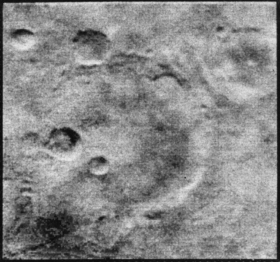
Every 2.2 years, Earth and Mars are aligned close enough in their orbits to open what rocket engineers call a “launch window.” The last window was May 2018 when one spacecraft set sail for Mars — NASA’s Insight lander. Insight is digging deeper into Mars than any other spacecraft. It joins seven other missions currently active at the red planet.

Let’s take a closer look at these new scientific ventures to Mars.
Mars 2020 Rover & Helicopter: NASA
The Mars 2020 Rover will be NASA’s fifth “Mars car,” if all goes well. A first will be a tiny helicopter, or drone. The Mars Helicopter will scout ahead of a planetary surface rover to provide aerial images of the terrain to make better science decisions for the rover. The Martian air is extremely thin, so many tests took place in near vacuum environments to get this robot ready for launch. It weighs four pounds and will fly at about 2,000 revolutions per minute (rpm). The rover itself looks like much like Curiosity rover, which has been roaming Mars since 2012.
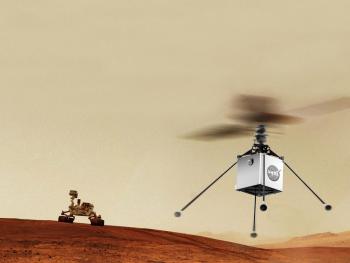
Mars Probe: China
China landed a robot on the Moon’s dark side last year and hopes they can follow that up with a successful trip to Mars. Their probe plans on orbiting the red planet and deploying a rover on the surface.
ExoMars: ESA (European Space Agency) & Russia
This mission started in 2016 with a successful orbiter and a lander, which unfortunately failed. The ExoMars Trace Gas Orbiter recently studied the impact of the recent planet-encompassing dust storm on water in the atmosphere. It has also measured a surprising lack of methane, one of the signatures scientists look for as potential signs of life. The 2020 mission will send a Russian lander and a European rover to two Martian locations rich in ancient organic material. The rover is called Rosalind Franklin after the scientist who helped solve the structure of DNA back in 1953.
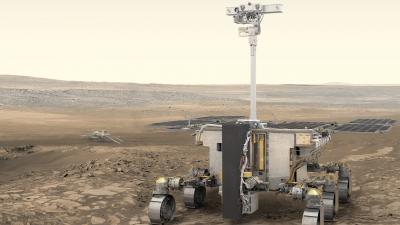
Hope Mars Mission: United Arab Emirates
This is the first mission beyond Earth orbit for the United Arab Emirates. The goal is to map out the first global image of the air encircling Mars. It will try to deduce the history of the Martian thicker atmosphere and why most of it escaped into space.
Spinning in the Solar System
.gif)
Why does the Earth spin? That’s a common question here at the Planetarium. What do you think the answer is?
Gravity? Nope. Gravity is the reason we don’t go flying off as the Earth spins. We spin about 800 miles per hour here in Wisconsin, but our planet is almost 8,000 miles in diameter and weighs 6 x 10^24 kilograms (kg), or 13 trillion-trillion pounds. So gravity keeps us well-grounded.
Another force? Something that’s pulling or pushing on our planet? No, that’s not the answer. The Sun’s immense mass warps spacetime into a gravity well that keeps the Earth in orbit, but that doesn’t cause our world to spin.
The Moon’s gravitational force does affect the Earth’s spin, but its gravity didn't cause it. The Moon actually slows our rotation down. Back in the time of the dinosaurs, Earth spun once every 23 hours. In the future -- 150 million years from now -- Earth's day will be 25 hours long. Billions of years from now, our world will have slowed down to 50 hours per day.
We experience this Moon “tug” every 18 months or so when we add a leap second! The next one might be added on June 30, 2020. There is a complicated formula to determine their dates, but Earth's rotation speed has slight, unpredictable variations that can cause the date to change.

So what makes the Earth spin? Inertia! You’ve probably joked about inertia, like in the cat picture. Inertia is Isaac Newton’s first law of motion, which states, “An object at rest stays at rest and an object in motion stays in motion with the same speed and in the same direction unless acted upon by an external force.” In other words: Objects keep doing what they are doing whether they’re in motion or not.
Angular momentum is like inertia for rotating objects. The Earth was born spinning. Our entire solar system was born spinning. The Sun and all the planets originated from a huge nebula of gas and dust that began rotating as it slowly collapsed upon itself due to gravity. The Earth would keep spinning at its same rate forever if there was no outside force acting on it.
But as we saw earlier, the Moon’s gravity slows the Earth’s rotation. But the total angular momentum in any closed system must remain constant. This means Earth returns a force that causes the Moon to spiral away from the Earth, about 1.5 inches per year. The Earth also slows down the Moon’s rotation since the Moon is tidally locked by gravity to the Earth. Yes, the Moon is rotating. It rotates once 27.3 days now—just like its orbital time. These times will stay locked far into the future, meaning we will always see the same face of the Moon.
In another 50 billion years, the Moon will stop spiraling away from Earth. The Moon will take 47 days to orbit the Earth— compared to 27.3 days now. On this day, the Earth becomes tidally locked to the Moon. This means the Moon will always be in the same spot in the sky. But of course, in 50 billion years, the Sun will be done. Our star will have exhausted its nuclear fuel, expanded into a red giant, and incinerated both the Earth and Moon.
This fatal future makes the mind spin. Time to head back to the present day and maybe just watch all the planets spin in their present speeds!
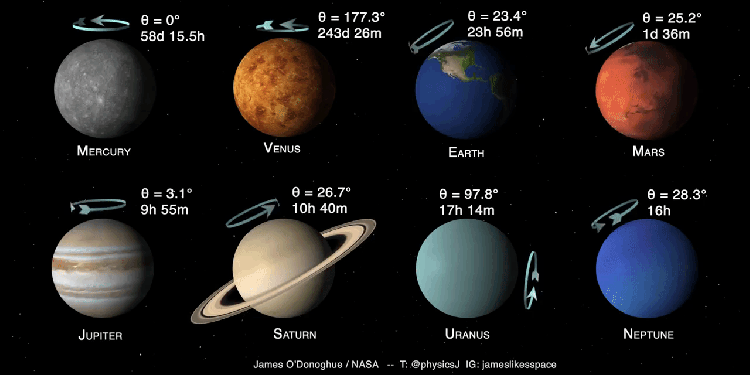
2020 Sky & Space Preview
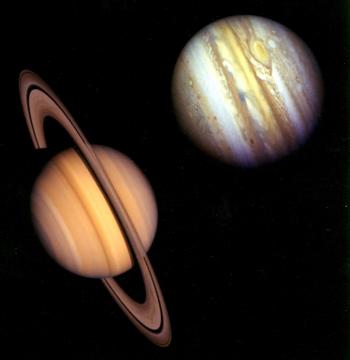
While there are many great cosmic events for 2020, Jupiter and Saturn’s Great Conjunction tops the list. These two giant gas worlds line up somewhat close once every 20 years. But shortly after sunset on December 21, Jupiter and Saturn will be so close their light will appear as one in the sky. In fact, both planets will be in the same view of a high-powered telescope! These “wandering stars” haven’t been this close in the night sky since 1623!
Jupiter and Saturn start 2020 in the morning sky, stay up most of the night during summer, move even closer through autumn, and then merge as one at the start of winter. Track these two jewels all year long!
2020 Sky & Space Calendar
January 5: Earth at perihelion, closest point to the Sun
January 8: Latest Sunrise
January 10-11: Penumbral Lunar Eclipse (Not visible in Wisconsin, most of North America)
January 25: Chinese New Year—Year of the Rat
February 18: Moon & Mars very close morning sky (Moon will occult, or cover, Mars for part of N. America)
February 29: Leap Day
March 8: Spring ahead! Daylight Saving Time begins
March 14: Pi Day and Einstein’s Birthday
March 18: 55th Anniversary of First Spacewalk—Russia’s Alexi Leonov
March 19: Spring begins at 10:50 p.m. CDT
March 20: Mars & Jupiter close in morning sky
March 24: Venus highest in evening sky, greatest elongation from the Sun
March 31: Mars & Saturn close in morning sky
April 2-3: Venus & Pleiades star cluster
April 7: Biggest Full Moon of 2020 (Also called Supermoon)
April 11-17: 50th Anniversary of Apollo 13
April 22: 50th Anniversary of Earth Day
April 24: 30th Anniversary of Hubble Space Telescope
May 1: Venus sets four hours after sunset
May 21-23: Venus & Mercury close in evening sky
May 31: Venus sets 30 minutes after sunset
June 3: Venus at inferior conjunction—between Earth & Sun
June 3: 55th Anniversary of First American Spacewalk—Ed White
June 5-6: Penumbral Lunar Eclipse (Not visible in Wisconsin, North America)
June 17: Earliest Sunrise
June 18: Mars & Mercury—very close in evening sky
June 20: Summer Solstice starts at 4:44 a.m. CDT
June 21: Annular Solar Eclipse: Africa, India, Asia
June 27: Latest Sunset
July: OSIRIS-Rex mission to Asteroid Bennu—sample collection (Returns to Earth 2023)
July: ESA ExoMars Mission 2020 Launch (Rover lands February 2021)
July : United Arab Emirates Mars Mission (Hope) Launch (Orbiter Science to start May 2021)
July 4: Earth at aphelion, the farthest point from the Sun
July 4-5: Penumbral Lunar Eclipse (Not visible in Wisconsin, North America)
July 13: Jupiter at opposition, opposite the Sun, up all night
July 17: NASA Mars 2020 Rover Launch (Lands February 18, 2021)
July 20: Saturn at opposition
July 30: 410 Years Ago Astronomer Galileo Galilei observes Saturn's Rings
August 11-13: Perseid meteor shower peaks
August 13: Venus highest in morning sky, greatest elongation from the Sun
September 11: Neptune at opposition
September 22: Fall arrives with the autumnal equinox at 2:50 a.m. CDT
October 6: Mars closest to Earth (magnitude of -2.6, brighter than Jupiter, 3 times brighter than Sirius)
October 13: Mars at opposition
October 30: Uranus at opposition
November 2: 20th Anniversary of International Space Station (ISS) continuously occupied.
November 3: Fall back! Daylight Saving Time ends
November 30: Penumbral Eclipse of Moon—barely noticeable—1:32 a.m. to 5:53 a.m. CST.
December: Hayabusa 2—Japanese asteroid sample returns to Earth
December: Launch of China’s Chang’e 5, Lunar Sample Return Mission
December 2: 25th Anniversary Launch of SOHO (Solar and Heliospheric Observatory) (still working)
December 7: Earliest Sunset
December 12-14: Geminid meteor shower peaks
December 14: Total Solar Eclipse—Chile & Argentina
December 21: Jupiter & Saturn Great Conjunction--evening sky (their closest approach since 1623!)
December 21: Winter Solstice starts at 4:02 a.m. CST
Sky Sights
_0.jpg) The bright stars of Orion, Taurus, and the beautiful Pleiades star cluster can be seen in the east right after sunset. Notice the red-orange colors of Aldebaran in Taurus and Betelgeuse in Orion. Rigel will have a very slight blue color.
The bright stars of Orion, Taurus, and the beautiful Pleiades star cluster can be seen in the east right after sunset. Notice the red-orange colors of Aldebaran in Taurus and Betelgeuse in Orion. Rigel will have a very slight blue color.
Venus climbs higher and higher in the southwest after sunset. Its brilliance makes it very easy to see. Watch for the Moon near little Mercury on January 26 and then glide by Venus on January 27-28.
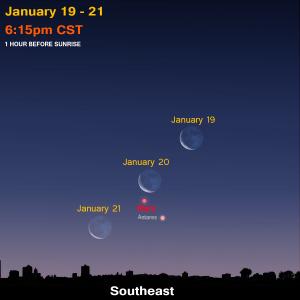 Mars rises three hours before the Sun and shines with the red star Antares in the southeast morning sky. Antares will be a little brighter than the red planet and twinkle much more. The Moon swings by from January 19-21.
Mars rises three hours before the Sun and shines with the red star Antares in the southeast morning sky. Antares will be a little brighter than the red planet and twinkle much more. The Moon swings by from January 19-21.
Jupiter is behind the Sun most of the month. It’s possible you might see Jupiter just before sunrise at the end of January. By mid- to late February, spotting the largest planet will be no problem.
Saturn is in conjunction with (behind) the Sun on January 13. This is when the Earth passes it on the solar system racetrack. Like Jupiter, Saturn becomes visible towards the end of February in the morning sky.
January Star Map
Sign Up
Receive this newsletter via email!
Subscribe
See the Universe through a telescope! Join one of the Milwaukee-area astronomy clubs and spot craters on the Moon, the rings of Saturn, the moons of Jupiter, and much more.
 Follow Bob on Twitter @MPMPlanetarium
Follow Bob on Twitter @MPMPlanetarium


_0.jpg)
_0.jpg)